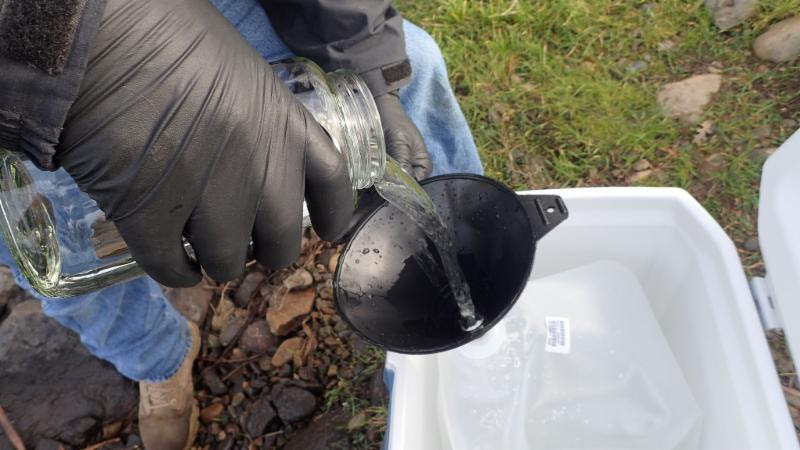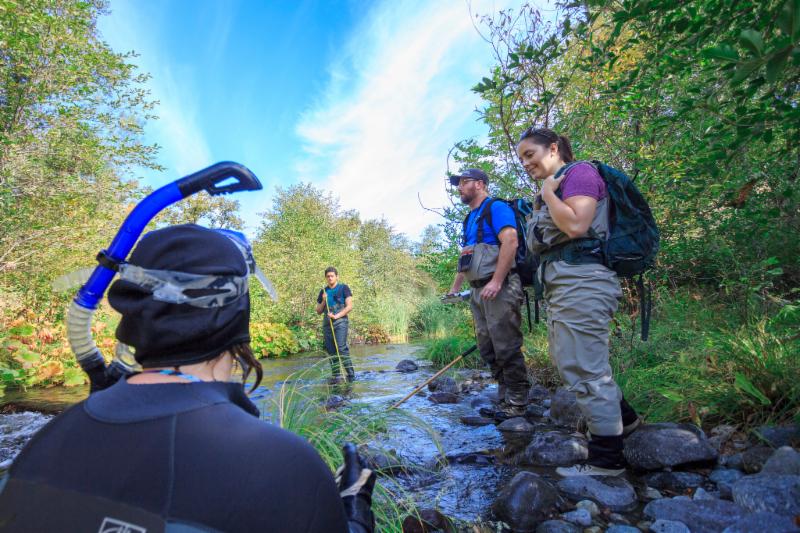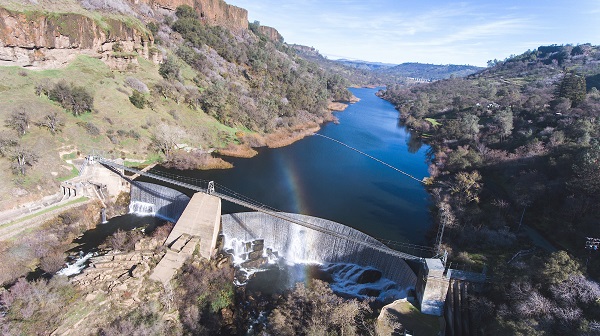From Sportfishing
Fish Report for 2-27-2017

Tainted Waters: Contaminants in the San Francisco Bay-Delta
2-27-2017
Erin Loury, FISHBIO
Contaminants enter our waterways through many sources - they flow in agricultural and urban runoff, wastewater treatment effluent, and oil spills; they leach from industrial waste and the byproducts of historical mining; and they can even be deposited from the air. Scientists currently recognize that contaminants in California's San Francisco Bay-Delta are at levels high enough to seriously affect wildlife and damage the overall health of the aquatic ecosystem (Healy et al. 2016). However, much is still unknown about the composition of contaminants in aquatic ecosystems and how they affect the development and survival of aquatic species. Contaminants are made up of complex mixtures, and affect aquatic life in combination with multiple stressors, both environmental (pathogens, temperature variability, habitat availability, food scarcity, etc.) and chemical (pesticides, metals, trash, personal care products, pharmaceuticals, etc.). FISHBIO recently attended a symposium on this topic titled Contaminants in the San Francisco Bay-Delta: Novel Tools and Approaches to Evaluate Effects of Multiple Stressors, which was hosted by the UC Davis Coastal and Marine Science Institute and the Delta Stewardship Council Delta Science Program.
Themes covered in the symposium included current challenges regarding contaminants in the Bay-Delta and other aquatic ecosystems, tools and approaches currently being used to evaluate stressors, and how ecosystems are interacting with these harmful substances. Presentations highlighted novel tools for measuring the effects of chemical contaminants and multiple stressors on wildlife and the overall health of the environment. The complexity of the problem and a lack of knowledge pose challenges to the study of contaminants. The use of synthetic chemicals and pesticides is rising, while constantly changing, and there is widespread concern surrounding personal care products and pesticides used today that are only now being assessed. One speaker with the U.S. Geological Survey stated that since 2005, on average of nine new pesticide active ingredients have been introduced in the San Francisco Bay/Delta watershed every year.
Multiple studies are working with model species, such as Daphnia, a plankton crustacean, and Menidia beryllina, theinland silverside, to study how organisms respond to contaminant exposure on a molecular or physiological level. At the NOAA Northwest Fisheries Science Center, Atlantic haddock embryos were exposed to contaminants from crude oil to determine how gene expression and physical development are distorted by exposure. Another study conducted at the Scripps Institute of Oceanography is trying to distinguish what makes some chemicals so persistent in the environment, and how they get into an organism. By analyzing proteins (i.e. P-glycoprotein) that actively move chemicals out of a cell, researchers are discovering Transporter Interfering Chemicals (TICs), or inhibitors, that prevent proper removal of chemicals, resulting in the bioaccumulation of toxins within an organism. Fish can have high levels of TICs, causing concern for humans consuming contaminated fish. Many studies have found various chemicals to diminish development; impair behavior; decrease growth, swimming speed, and reproductive output; and result in intersexed organisms or mortalities.
Moving forward, many speakers agreed on the importance of collaboration among scientists to compile information and to determine molecular and environmental biomarkers (or the biological changes that an organism or ecosystem endures when exposed to contaminants), to aid the use of predictive science. Such science could help determine the impacts of future contaminants on aquatic life and the environment. There was also a call for technological advances to monitor environmental conditions, which could provide real-time environmental health indicators to see how aquatic organisms are doing. Such technologies would be useful for situations like oil spills, where an initial assessment is necessary but may not be feasible right away.
Speakers also shared tools to communicate research results, such as the Surface Water Ambient Monitoring Program (SWAMP), a California State Water Board program that collects and provides high-quality data on all surface water in California to resource managers, decision makers, and the public. The My Water Quality website by the California Water Quality Monitoring Council aims to provide current water quality information and look for gaps in current data about drinking water safety, which fish and shellfish are safe to eat, and other relevant information. Providing the public with tools to see real-time data, especially in areas where they live, could help people see how complex mixtures of contaminants impact their lives. To learn more about the specific studies conducted or contaminants in the San Francisco Bay-Delta, you can watch the symposium videos that are now available online.
FISHBIO is a dedicated group of research scientists, engineers, and technicians that specialize in counting, tracking, and analyzing trends in fish and wildlife populations throughout the world. An expert staff, technical capacity, and state-of-the-art equipment make FISHBIO a trailblazer in aquatic research. For more information, please visit FISHBIO.com.
Photos
< Previous Report Next Report >
More Reports
Snorkel School: Diving into Big Chico Creek
Big Chico Creek
2-13-2017
The streams and tributaries that feed the Upper Sacramento River of Northern California are critical habitats for several species of...... Read More

2-5-2017
Many areas in California are still recovering from the previous weeks of torrential rainfall, caused by an atmospheric river. As...... Read More

Website Hosting and Design provided by TECK.net
